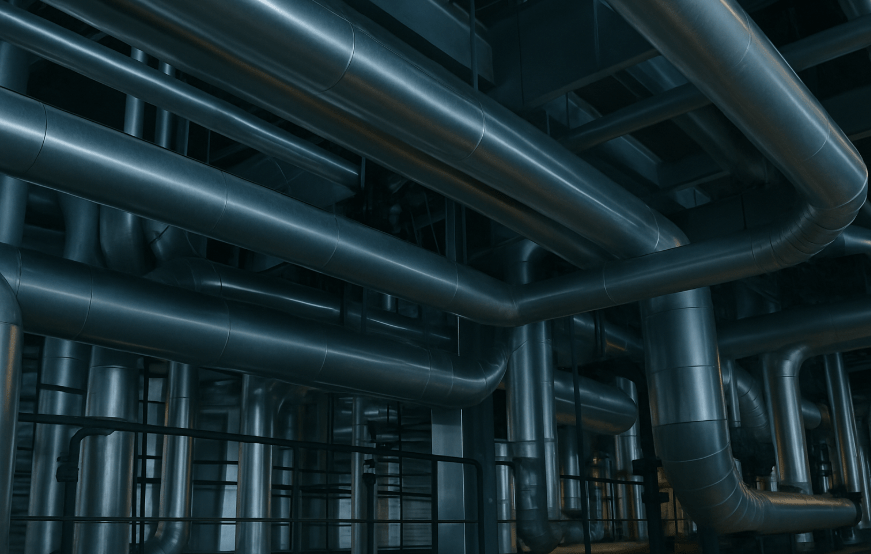Industrial pipelines are the silent workhorses of countless industries, transporting everything from water and oil to chemicals and natural gas. Although they often operate out of sight, these networks are critical for ensuring efficient production, safe transport of materials, and consistent supply chains.

Industrial pipelines are systems of tubes, valves, and fittings designed to move liquids, gases, or even solids from one location to another within industrial environments. They are engineered to handle extreme conditions—such as high pressure, high temperatures, or corrosive materials—and must meet strict safety and quality standards.
1. Oil and Gas Industry
Transporting crude oil, refined fuels, and natural gas across long distances.
2. Chemical Processing
Moving raw chemicals between processing units while minimizing risk of contamination.
3. Water Treatment
Delivering clean water and removing wastewater safely.
4. Food and Beverage Manufacturing
Ensuring hygienic transport of ingredients like milk, juices, and syrups.
The choice of material depends on the product being transported and the environmental conditions:
• Carbon Steel
Durable and cost-effective, widely used in oil and gas.
• Stainless Steel Corrosion-resistant, ideal for food and chemical industries.
• Plastic (PVC, HDPE)
Lightweight and resistant to many chemicals.
• Composite Materials
Offering both strength and flexibility for specialized uses.
Regular inspections, cleaning, and pressure testing are crucial to prevent leaks, corrosion, and blockages. Modern pipelines are often equipped with sensors that provide real-time monitoring for early detection of issues, minimizing downtime and environmental impact.
With advancements in smart technologies, industrial pipelines are becoming more efficient and safer. The integration of IoT (Internet of Things) sensors, AI-based predictive maintenance, and eco-friendly materials is transforming the way industries manage their pipeline networks.
From refineries to food processing plants, industrial pipelines are the veins and arteries of modern manufacturing. Understanding their function, construction, and maintenance is essential for ensuring safety, efficiency, and sustainability in today’s fast-paced industrial world








